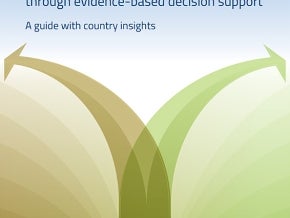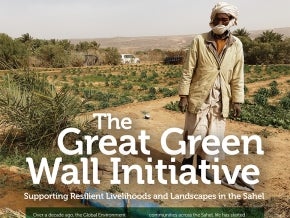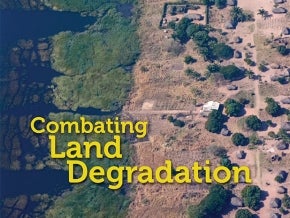
Moving from the Paris Agreement to climate action is on everybody’s mind these days and transforming agricultural production to climate smart practices is central to the international community’s efforts of keeping the global climate well below 2 C.
“From Agreement to Action: Implementing African INDCs for Growth and Resilience in Agriculture” was the theme of the 2nd Africa Climate Smart Alliance Forum that took place in Nairobi, Kenya, in October. The Majority of the Intended Nationally Determined Contributions, or INDCs, submitted by African countries prominently feature agriculture and climate smart agriculture in their mitigation contributions. Climate change is now highlighted in most of African national development plans, also reflecting the African Union Malabo Declaration on agriculture transformation which was specifically about climate smart agriculture and the agriculture - climate change nexus.
The Forum was organized by the NEPAD Agency in liaison with the Government of Kenya and support from GIZ, FAO, IFAD and the NEPAD-iNGO Alliance on CSA. It was an opportunity to share experiences and galvanize action on the ground in Africa, following the adoption of the Paris Agreement on Climate Change and the Sustainable Development Goals.
Among all these projects which were highlighted, one of the most interesting was this GEF/UNDP project to restore degraded lands and improve the resilience of communities in Kenya’s drylands.
Mainstreaming Sustainable Land Management -SLM- in Agropastoral Production Systems in Kenya, is a five year GEF project developed by the UNDP under the Strategic Investment Program for SLM in Sub-Saharan Africa (GEFID: 3370, GEF: $3 million; co-financing $5.5 million). In Kenya, where 80 percent of country’s landscapes are arid and semi-arid lands, mainstreaming SLM in agro-pastoral production systems offers multiple benefits for people, ecosystems, and landscapes.
Phemo Kgomotso, Regional Technical Specialist from the regional UNDP office, was thrilled to confirm that this project succeeded in rehabilitating more than 100,000 ha of degraded lands through pasture reseeding and tree planting. In addition, the project trained nearly 11,500 farmers (50% women) on practical SLM tools and skills such as smart water management, thanks to a network of 61 Farmer Field Schools. Farmers were also trained in financial literacy, leading to a 30% increase in access to micro-finance for investments in enhanced agricultural productivity. This improvement in productivity has led to increased food availability and improved nutrition through more diverse and healthier foods (e.g. milk, meat and eggs), reducing the reliance on food relief programs. Increased incomes have also had other development benefits at the household level, through for example, the ability to pay school fees and improving education.
Capacity building initiatives such as the Farmer Field Schools approaches have also had upstream benefits, for example the empowerment of previously marginalized groups, such as women and youth, to participate in decision-making at community and household levels.
The success of this project has facilitated increased uptake and investments by government in promoting the uptake and upscaling of the approaches promoted by this project in other, similar landscapes in Kenya.



Comments
Having worked on SLM issues and after reading this, it is clear that there are multiple development benefits that come out of such initiatives.
There is a definite imperative for the development community to start finding leavers such as these and use them to address development challenges faced by the poor. SLM can be used as a catalyst for SDG implementation, it can also be used to efficiently use resources for multiple outcomes. The UNCCD/GM's Land Degradation Neutrality initiative is one such programme we should look to for such development results.
Thanks for sharing this - any eye opener!